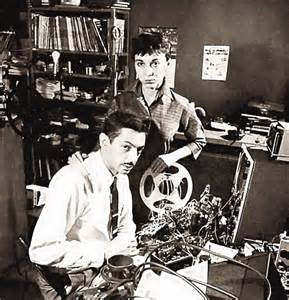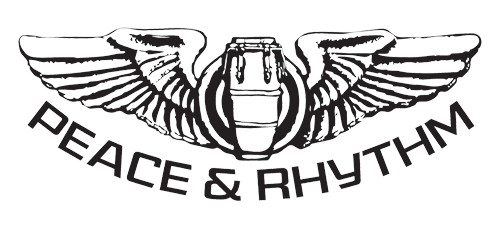Louis Barron / April 23, 1920 - Nov 1, 1989
April 23, 2017

Louis Barron together wit his wife Bebe were early pioneers of American electronic music and created the film score for MGM’s awesome 1956 Sc-Fi flick Forbidden Planet. The “electronic tonalities” of the soundtrack made it the world’s first entirely electronic film score.
Louis Barron was an electrician who custom-built his own circuits which the couple overloaded. They generated the sounds using a ring modulator, and they further fucked with the sounds by manipulating the tape and adding reverb, etc. They improvised along the way, trying to craft the sounds along to the actions of the characters as best they could.
The soundtrack could not be nominated for an Academy, nor could it be technically considered “music” by the establishment and there wasn’t a soundtrack album released at the time all for the same reason: the Barrons simply did not belong to the musician’s union. In fact, they were discovered by chance in a Greenwich Village nightclub and were hired immediately by an MGM producer to create sonic moods for the film. Finally, after twenty tears, the soundtrack was released on the Barrons’ own Planet Records imprint.
The couple had received their first tape recorder as a wedding gift in 1947 and they became composers of musique concréte. Most everything created was left to electronic chance so they decided to record everything they did. There has been suggestion that the couple may have invented the tape loop. It has also been considered that their home studio, which they created in 1947, may have been the nation’s first electronic music studio. They also used their tape recording machines to capture the in-studio voices of people like Aldous Huxley, Henry Miller, Tennessee Williams and Anais Nin, effectively creating audiobooks that they would release on the Barrons’ own label.
Their recording business was a success, at the time only two other such services existed in NYC (one of them owned by composer Raymond Scott). Louis Barron, with his electrical expertise, built most of the studio gear, including speakers, oscillators, spring reverb and tape machines. They worked in the studio with John Cage, Morton Feldman & others. The Barrons also worked with filmmakers Maya Deren and Shirley Clarke. Sixty years later there are digital attempts at trying to achieve the sound the Barrons got with their analog process.
